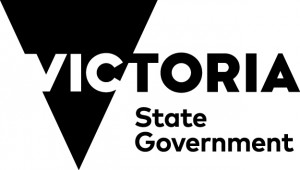Vicsport work with Body Safety Australia to strengthen child safety in sport
To strengthen Vicsport’s work in the area of child safety, Body Safety Australia (BSA), a not-for-profit organisation specialising in child safety, empowerment and creating child safe environments, was recently engaged to facilitate a two-day advanced professional development workshop.
Currently undertaking child safe sport reviews with three different SSAs, Vicsport Sports Consultant Fiona Jones realised the processes were focused on the adult perspective without considering children’s voices - an area which BSA could help rectify.
“One of the key aspects of the Child Safe Standards, number seven, is child engagement and empowerment,” said Jones. “For the reviews we are undertaking with some SSAs, we wanted to bring the information we were getting from adults and discover whether the children agreed with those notions. That would reveal how children experience the sport and ensure they were having the most fun and safe experience possible.
“Relating to child safety can sometimes be a delicate one, but coupling that with working with kids between the ages of 10-18 is even more difficult. However, my colleague, Vicsport Participation & Innovation Manager Tom Dixon, had been in contact with BSA already and we decided to utilise their services. Initially, we were going to have BSA run engagement workshops with each individual sport but we decided that having BSA train us would provide Vicsport with the in-built knowledge which we could then pass on to sports, knowing also that BSA were available at any time for further advice.”

With BSA’s training catering for up to ten people, Vicsport opened the invitation to SSAs and RSAs whose organisations were progressed enough in their child safe approaches that the workshop would be most beneficial.
The two-day online workshop via Zoom spanned 11 hours with Jones, Dixon and the participants finding the content confronting at times but ultimately educational and rewarding. Day 1 featured statistics on the myths, facts, indicators and risk factors of childhood sexual abuse, grooming and abusers as well as the role of technology in childhood sexual abuse. They then moved to embedding and modelling child safe practices and how to implement culturally sensitive and inclusive solutions.
“We discussed some unpleasant content but it is really important to gain that level of knowledge and ultimately, we found it very rewarding as we realised there is a lot we can do to help,” said Jones. “It’s not always about having a discussion on child safety specifically, you can speak more broadly about general activities, but mostly it is about engaging children to build a positive, trusting relationship and environment so if something untoward does happen, they know they have the trust of the adults and can speak up knowing the situation will be taken seriously.”
On Day 2, the group looked at how to run a workshop for children, using age-appropriate language, strategies for discovering how, where and when children feel safe and the best approaches to obtaining the responses you are after.
“BSA Founder and CEO Deanne Carson was able to give us examples from her practical experience with schools around different approaches to child engagement,” said Jones. “One project saw her work with children to develop their own code of conduct. The results were similar to what adults had developed but there were some points where, for example, the adults had struggled with terminology and the kids were able to simplify it instantly. This made the adults realise they were making things more difficult than they needed to be.
“Another project had children colour in a map of their school for where they did and did not feel safe. Most areas were what the adults expected but one surprise identified was the centre of the was a drain oval which, from an adult’s perspective, did not look like a problem as it was in open view of supervising adults, but children felt that much of the verbal bullying occurred in this space. That helped the school implement strategies to ensure the kids could make full use of the facilities while feeling safe.
“The strategies aren’t always about the prevention of child abuse but sports facilities and venues could do similar tasks with children to strengthen their child safety standards and it all helps in ensuring children feel safe when participating in sport.”
Jones’ greatest takeaway from BSA’s workshop sounds simple but is a mantra that will serve Vicsport and the attending SSAs and RSAs well for future child safety work.
“Throughout the two sessions, the answer invariably came back to ‘ask the kids.’ It sounds simple but that was the biggest lesson. Children have a lot to say, we often just don’t listen so ensuring their voices are heard, they feel safe when they want to talk and that adults are ready to listen will go a long way towards creating a safe environment.
“Child empowerment has been something that Vicsport and the broader sports industry has struggled with and while we know we haven’t cracked the nut entirely, we are making some very good and positive inroads.”
Learn more about Vicsport’s child safe work, resources for SSAs, RSAs, clubs, leagues and associations, case studies and further information on the Child Safe Standards here.




















